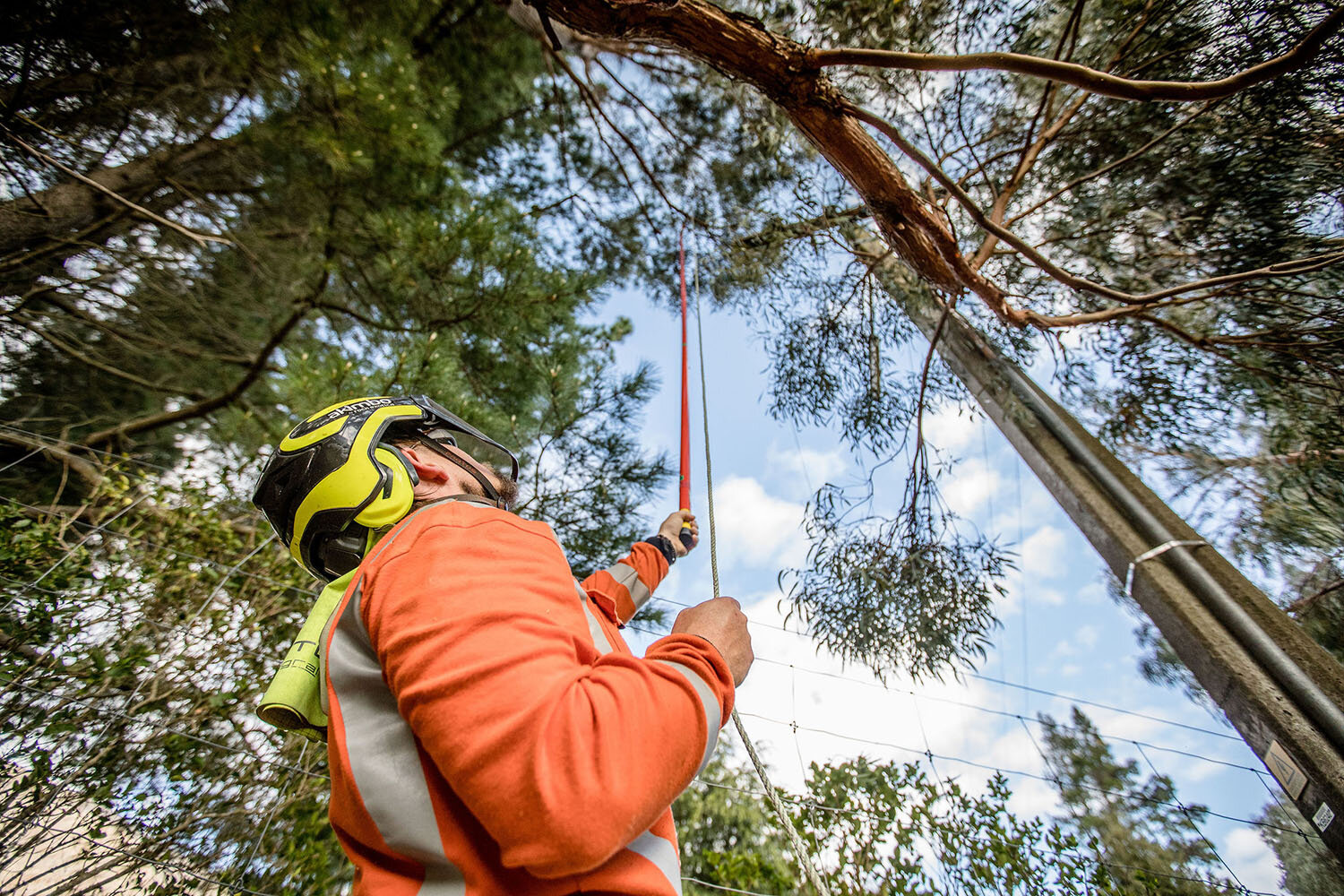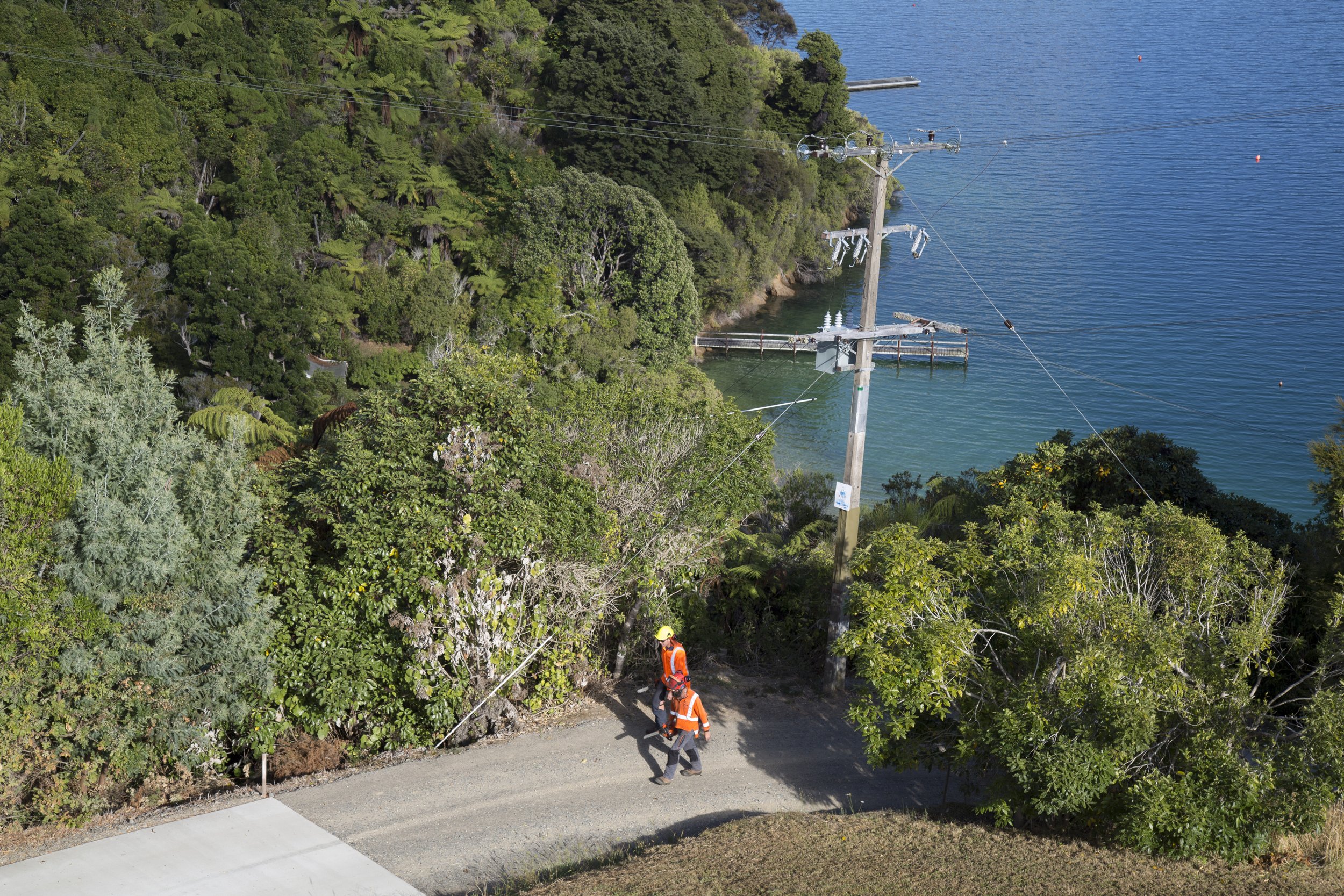
TREES & VEGETATION
Trees & Vegetation
Tree owners are legally required to ensure their trees don’t grow too close to power lines because if they do, they have the potential to cause power fluctuations and appliance damage, power failure, fire, electric shock or electrocution.
Vegetation Control Programme
MLL operates an ongoing and extensive vegetation control programme to reduce the risk of:
accidental electric shock or electrocution.
fires caused by electricity.
power fluctuations or interruptions caused by branches touching, or being blown into power lines.
For vegetation control work we endeavour to come up with a solution that is mutually acceptable to both the tree owner and MLL. We need to eliminate the problem for a reasonable period of time given we have over 3,300km of line which needs to be kept free of vegetation interference to help us provide a reliable power supply to the community.
MLL has an ongoing vegetation control programme in place to help maintain a safe clearance between trees and power lines where they are situated in a public location.
Service Lines
The property owner is responsible for the maintenance and repair of electrical lines and equipment, known as services lines, on their property. This means property owners are responsible for the costs of trimming trees near their service lines.
You can hire a qualified arborist, or you can do-it-yourself - but remember that unless you are using someone qualified to work around live lines, always have your power supply temporarily disconnected before working near service lines.
For a list of authorised contractors click here.
To arrange a temporary safety disconnection complete the form below.
How You Can Help
If you know of trees that are causing interference with a power line (or have the potential to), please call us on 03 577 7007 or report a fault here.
Keep our power lines free of vegetation interference by only planting recommended trees under or near our power lines. These are trees that grow less than four metres tall and don’t tend to shed branches or fronds.
Comply with any notice to cut or trim a tree - it’s in the best interests of all parties, including the tree.
If you have any non-urgent tree and vegetation related questions please click on the button below and our vegetation team will contact you. We also have a list of helpful frequently asked questions which can be viewed here.

Electricity (Hazards from Trees) Regulations 2003
These Regulations were introduced by the government because trees need to be kept at a safe distance from electricity lines for public safety and to protect electricity supply.
The regulations:
define safe separation distances between trees and power lines.
specify who is responsible for ensuring clearances are maintained.
place potential liability on the tree owner if any damage or accident occurs when trees touch power lines.
If your tree is growing within the Cut-back zone or Notice Zone (Tree A), you may get a legal notice saying your trees must be trimmed soon because they’re getting too close to power equipment. This is called a Hazard Warning Notice.
Should they reach the Growth limit Zone, (Tree B), you will get a legal notice requiring them to be trimmed. This is called a Cut or Trim Notice.
Our website has a list of authorised contractors.
For further information on minimum safe distances for excavation and construction near poles or stay wires, you should refer to Worksafe NZ’s ECP 34 - New Zealand Electrical Code of Practice for Electrical Safe Distances (NZECP 34:2001).
Safe Separation Distances
The Regulations specifically advise rules for tree owners and electricity network companies with regard to cutting or trimming trees that grow too close to power lines.
Distances are for spaces surrounding the electrical conductors for spans less than 150m, and LV and 11kV lines.
| Line Voltage | Growth Limit Zone (Qualified Utility Arborists) | Cut Back Zone (*Any Tree Worker) | Notice Zone (*Any Tree Worker) |
|---|---|---|---|
| 11,000 (11kV) | 1.6m | 2.6m | 3.6m |
| 400V/230V (LV) | 0.5m | 1.5m | 2.5m |
*ECP34 must also be adhered to, a person or machinery cannot be within 4m of the line unless a Close Approach Permit has been applied for.
Distances are from any point from the line, except for vertically upwards, which should remain clear (clear to the sky).
| Line Voltage | Growth Limit Zone (Qualified Utility Arborists) | Cut Back Zone (*Any Tree Worker) | Notice Zone (*Any Tree Worker) |
|---|---|---|---|
| 33,000v (33kV) | 2.5m | 3.5m | 4.5m |
*ECP34 must also be adhered to, a person or machinery cannot be within 4m of the line unless a Close Approach Permit has been applied for.
Long Line spans, greater than 150m, distances surrounding the conductor except for vertically upwards, which should remain clear (clear to the sky).
| Length of Span | Distance From Below The Line | Horizontal Distance 15% of each span at either end of the span | Horizontal Distance of the distance for the centre 70% of each span |
|---|---|---|---|
| 150m to 300m | 4m | 4m | 8m |
| 301m to 500m | 4m | 7.5m | 15m |
| 501m to 700m | 4m | 15m | 30m |
| Greater than 701m | 4m | 25m | 50m |
Penalties
Electricity networks and tree owners must comply with the requirements of the Regulations and are both liable for financial penalties if they fail to comply.
A notice to cut or trim a tree cannot be ignored.
Tree owners must comply with the notice in the time stated and advise of the time and location of the cutting or trimming of the tree, or they could be fined up to $10,000 plus other costs, and could also be liable for costs if power lines and/or equipment are damaged by a tree. If the offence continues, a further fine of up to $500 per day could be imposed for every day, or part of a day, that the offence continues.

